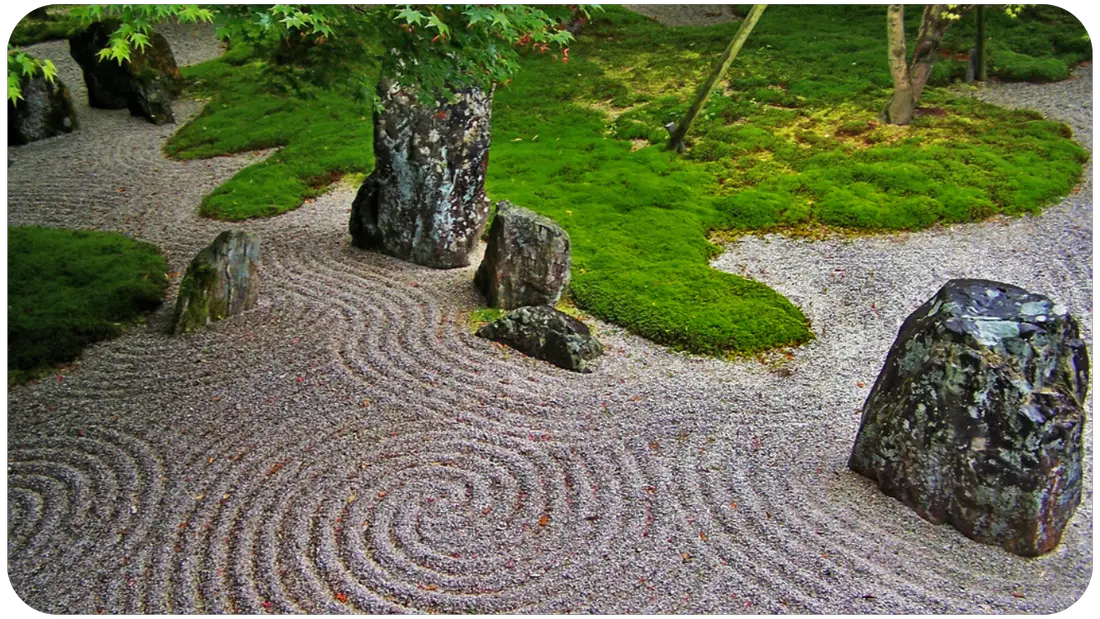A dry garden (枯山水, karesansui?) is a Japanese garden consisting of sand, rocks, gravel and moss, usually without other plants.
Principles
Many dry gardens were created from the beginning of the 15th century in monasteries and Zen temples, hence their common name "Zen garden". The gardens are usually abstract in character and are created with an economy of means in keeping with the Zen desire to eliminate the superfluous, which contrasts with the profusion of gardens of previous eras.
Only stone and sand remain. In the absence of water, it is suggested by sand or gravel, where wave patterns are drawn with a rake. Occasionally, pruned evergreen shrubs are allowed.
Another characteristic of the dry garden is the smallness of its dimensions: refuting the distinction between the gigantic and the tiny, the dry garden is inserted into a courtyard of the monastery.
The monk can meditate in front of this pocket universe, its maintenance is part of the daily manual activities. Its lack of colors makes it similar to the monochrome painting (sumi-e) of the Song period.
The Zen Garden of Ryōan-ji Temple
The most famous Zen garden is located in the Ryōan-ji temple in Kyoto, Japan. Ryōan-ji is a temple belonging to the Myōshin-ji school, a branch of the Rinzai Zen school.
The designer(s) of the garden are unknown, it could be Tessen Sôki, or it could have been the architectural work of the painter Sōami, made by the monk Tesshu (author of Small Worlds) helped by Kotaro and Hikojiro. It is overlooked by the temple terrace where monks come to meditate.
After several fires and reconstructions, the oldest of which dates back to 1488, the temple was modified. The current garden is 30 meters long and 10 meters wide. At its creation, it was 108 tatamis in surface (197 m2) in reference to the 108 grains of the Buddhist chapelets.
It contains fifteen grayish rocks of different sizes, divided into five groups of two, three or five stones, hence five islands, some surrounded by moss. An old decrepit wall constitutes the bottom.
The stones are placed on a carpet of white kaolin sand, raked every day. The rocks are arranged in such a way that visitors never see all of them at once, only twelve, thirteen or fourteen stones, out of the fifteen in place.
It is the most visited Zen garden in the world. It has given rise to numerous publications and a wide variety of interpretations: the stones are thought to symbolize the sixteen prominent disciples of the Buddha, although one stone is missing in this hypothesis, or a tigress helping her cubs cross a river.
Westerners thought that this place represented the earth with its five continents, as it was perceived before we knew it was round, etc. This karesansui symbolizes principles of the historical Buddha's teaching, which is the most likely hypothesis.
However, in the Muromachi period, the garden was famous not for its stones but for its cherry tree and the beauty of its flowers. Once dead, the cherry tree was cut down, and the garden became mineral.
The Zen garden of Montvendre in the Drôme is an architectural copy of that of Ryôan-ji, made from the original plan found in the 1990s presented on the Ryoân-ji site.





